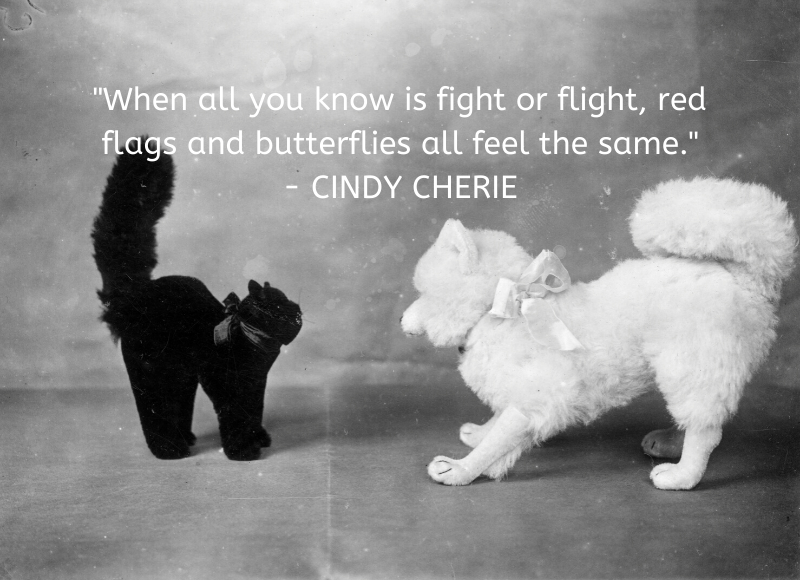The ‘fight or flight’ response was first coined in the 1920’s by Walter Cannon, a professor of physiology at Harvard Medical School. He used it to describe the body’s physical response to stress.
Preparing for a Threat
When a person perceives a threat, the body prepares to protect itself by essentially sending a message via the sympathetic nervous system, triggering the adrenal glands. This results in the release of the stress hormones: epinephrine (adrenaline), norepinephrine (noradrenaline), and cortisol, etc.
Physical Symptoms of the Body’s Fight or Flight Response
Physical symptoms of this increase in hormone levels may include, but are not limited to:
- Increased heart rate
- Rapid breathing or difficulties catching your breath
- Increased blood flow to certain parts of the body, such as the arms and legs
- Decreased blood flow to other parts, such as the stomach, often described as a fluttering feeling, called butterflies
- Dilated pupils
- Hearing loss (temporary)
- Tunnel vision (temporary)
- Sweating
- Dry mouth or dry eyes
- And more…..
A Perceived Threat Versus an Actual Threat
The increase in hormone levels and onset of associated symptoms happens quickly and automatically. And this rapid response is important – when you are actually facing a dangerous situation. So, what happens when this fight or flight response kicks in and there is no true threat of danger (just a perceived threat)?
The Psychological Effect of the Fight or Flight Response
The body reacts the same way physically to a perceived threat as it does to a real threat. When we are able to identify a real threat that triggered a fight or flight response, then psychologically the symptoms and triggered response make sense to us. But when we can’t identify any presence of danger, we aren’t able to psychologically process the body’s physical response.
This mental roadblock of not being able to mentally associate the symptoms with a real threat, can intensify the fear, and potentially trigger a panic attack. If this happens repeatedly, we can start to fear the symptoms, instead of the danger, which can lead to feelings of anxiety and increased stress levels.
Increased feelings of stress and anxiety can also prevent us from being able to accurately interpret symptoms and feelings. This quote by Cindy Cherie sums it up nicely: ‘When all you know is fight or flight, red flags and butterflies all feel the same’.

Treating Panic Disorder, Stress and Anxiety Triggered by the Fight or Flight Response
Since the fight or flight response is automatic, we aren’t able to consciously control if and when the onset of symptoms occurs. Therefore, treatments for panic disorder, stress and anxiety triggered by the fight or flight response focus on behavioral therapy.
Dr. Alyx MacTernan of Elemental Mental Health specializes in treating clients for panic disorder, anxiety and stress. If you are experiencing any of these symptoms, regardless of the trigger, and want to learn more about treatment options, please contact us via the website. We offer online mental health counseling services to residents of Georgia, Florida and Texas.
